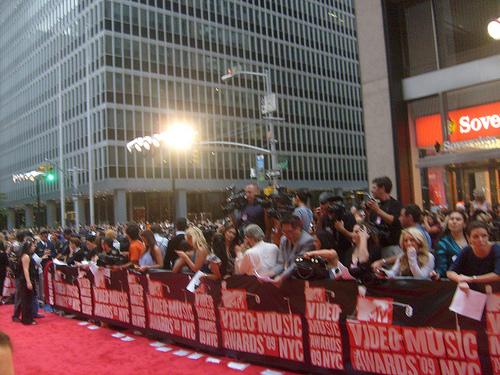Main Body
10. MTV and Music in the 1980s
Clayton Funk
- TV and Multimedia Shift

In the Summer of 1969, broadcast television made it possible for almost anyone with a television to experience in virtual space the first human to walk on the moon. Most of what we saw on the television screen was a studio simulation with actors in astronaut costumes acting out the moon walk as it happened. What was live from the Moon surface, however, was the actual radio communications between NASA and the Astronauts. In those days, viewers still perceived programming like this as a way of “being there,” as if to embody Marshall McLuhan’s theory that television viewing actually extended the range of viewers’ senses, what they could see and hear. Then came Cable Television.
The years 1940 through the 1960s saw some of the first Cable Television (CATV) systems in the United States developed by James F. Reynolds in his town of Maple Dale, Pennsylvania, which grew to include near by cities. But CATV was controversial, because its closed network tended to exclude some viewers who could not pay for it, which went against the grain of those who believed broadcast media carried vital information that citizens have a right to know and should be free to anyone within range.
After the complicated discourse of lawmaking and litigation in the 1960s, CATV was allowed to grow, so long as it carried local free broadcast stations; and by the 1980s CATV became more common, especially in major urban areas where reception could be bad due to signals blocked by tall buildings. As more neighborhoods came onto the cable grid, the more TV began to change.
The rapidly growing cable television industry was also changing our perceptions of why people watched TV. Instead of a network on which you heard a variety of programming from the press, to sitcoms, to variety shows; cable featured an array of channels, each with its own kind of programming. There were cable channels that broadcast only news and commentary around the clock, while other channels, like American Movie Classics (AMC), ran classic movies back-to-back. And not the least of these channels was Music Television or MTV.
MTV
Music Television (MTV) came online in 1981. It was a new kind of cable channel formed expressly to broadcast the new media of music videos and most importantly a new clearinghouse for rating and promoting recorded music. In homes with multiple television sets, young people could watch music in one room while parents watched programs they liked in another room.
Link to this video of the history of MTV at: https://youtu.be/Y6jz65YRCy8
By the 1990s, cable services were digitized and bundled with fast Internet access. This configuration made it possible to see a video on MTV and order the CD from such new retail sites as Amazon.com. And as we know, in less than a decade, music could simply be downloaded.
Remember the power of radio DJs to promote recordings between the 1950s and the 1970s? Well, MTV represented a radical departure the world of Radio DJs. In its early years, MTV targeted an audience of mostly White suburban males, with music from a Rock industry made up of mostly White male performers, but there were a few exceptions. Micheal Jackson was one of the musicians of color to be featured on MTV, and eventually such women performers as Cyndi Lauper, Donna Summer, and Pat Benatar became popular. It took much longer for MTV to broadcast Hip Hop and Rap videos, thinking White audiences would be afraid of the aggressive lyrics. But sooner than later, White viewers constituted the largest audience demographic for Hip Hop in the 1990s and beyond, around the world. This growth came along at the right time for a music industry struggling in an economic recession. And eventually the marketing of the music industry would shift to digital networks. (See video above).
Continue to biographies of musicians from the 1980s on this Biographies menu: http://aaep1600.osu.edu/book/menu1980s.php
Or simply follow this list:
- Alabama
- Blondie
- Duran Duran
- Eurythmics
- The Go-Go’s
- Guns and Roses
- Michael Jackson
- Madonna
- Metallica
- The Police
- Prince
- Public Enemy
- George Strait
- Van Halen
